By Tami Morton, Lois Knezek, & Betty Reily, University of North Texas, Denton, TX
Children’s and adolescent literature is a wonderful starting place for young readers to begin considering and understanding experiences of immigration to the United States. Many talented authors have provided characters with whom many children and young adults can relate.
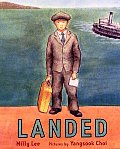 Milly Lee (2006) introduces readers to Sun Lee, a 12-year old Chinese boy, who immigrates to America in the book Landed. Sun’s parents believe that there are more opportunities for him in the United States, so they prepare him for his departure. Though Sun is a bit nervous, he knows that his older brothers went to America once they reached the age of 12, so he was ready and willing to make the trek. Sun’s immigration to America was totally voluntary. In the story, the description of Sun’s preparation, traveling experiences, as well as the extended time he remained at Angel Island before he officially “lands,” were a testament to bravery. It was clear at the end of the story that Sun really was happy and proud to be in the United States. Though this story took place in the 1930’s, it provides readers an opportunity to think critically about the entrance of Chinese people who wanted to come to America.
Milly Lee (2006) introduces readers to Sun Lee, a 12-year old Chinese boy, who immigrates to America in the book Landed. Sun’s parents believe that there are more opportunities for him in the United States, so they prepare him for his departure. Though Sun is a bit nervous, he knows that his older brothers went to America once they reached the age of 12, so he was ready and willing to make the trek. Sun’s immigration to America was totally voluntary. In the story, the description of Sun’s preparation, traveling experiences, as well as the extended time he remained at Angel Island before he officially “lands,” were a testament to bravery. It was clear at the end of the story that Sun really was happy and proud to be in the United States. Though this story took place in the 1930’s, it provides readers an opportunity to think critically about the entrance of Chinese people who wanted to come to America.
Continue reading →
 With a powerful title framing their session, four authors spoke to the theme of resistance and to the notion of “enough is enough” as they connected a recent work to contemporary social issues. The panel included Larry Brimmer (Strike, 2014), Margy Burns Knight (Talking Walls: Discover the World, 2014), S. D. Nelson (Digging a Hole to Heaven, 2014), and Eugene Yelchin (Arcady’s Goal, 2014) Continue reading
With a powerful title framing their session, four authors spoke to the theme of resistance and to the notion of “enough is enough” as they connected a recent work to contemporary social issues. The panel included Larry Brimmer (Strike, 2014), Margy Burns Knight (Talking Walls: Discover the World, 2014), S. D. Nelson (Digging a Hole to Heaven, 2014), and Eugene Yelchin (Arcady’s Goal, 2014) Continue reading 

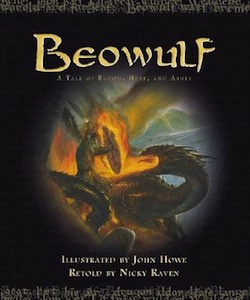
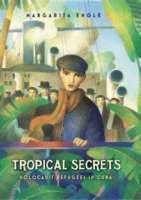 Those who are familiar with the vast range of contemporary novels published today are aware of the diversity of topics, characters, and events that make these books significant and appealing to readers. However, as with the realm of picture books, many readers, adolescents and young adults, are not aware of the powerful contents of these books, and educators working with this population are often even less informed, or their perception is that YA literature is a bridge to the more difficult pieces traditional literature.
Those who are familiar with the vast range of contemporary novels published today are aware of the diversity of topics, characters, and events that make these books significant and appealing to readers. However, as with the realm of picture books, many readers, adolescents and young adults, are not aware of the powerful contents of these books, and educators working with this population are often even less informed, or their perception is that YA literature is a bridge to the more difficult pieces traditional literature. 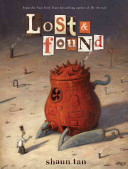 Picture books have been defined over the past few decades with great integrity and attention to the complex interaction that occurs for the reader through the visual aspects of such books—text, illustrations, total design; a commercial product; a social, cultural, historical document (Bader, 1976). Still, when secondary teachers are approached about using picture books in the classroom, many somewhat shun the idea or act surprised that anyone could think this a valid curricular resource for older students. A small number attest to the fact that picture books hold significant experiences for older readers and these teachers can share numerous reasons why picture books play an important role in their instruction.
Picture books have been defined over the past few decades with great integrity and attention to the complex interaction that occurs for the reader through the visual aspects of such books—text, illustrations, total design; a commercial product; a social, cultural, historical document (Bader, 1976). Still, when secondary teachers are approached about using picture books in the classroom, many somewhat shun the idea or act surprised that anyone could think this a valid curricular resource for older students. A small number attest to the fact that picture books hold significant experiences for older readers and these teachers can share numerous reasons why picture books play an important role in their instruction. 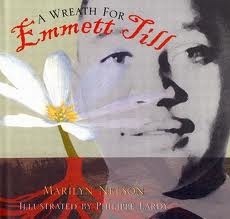
 The realization that other young citizens of the global community have messages of empowerment, or agency, to share with children of the western world is perhaps one of the most important roles of international literature. The literature, in which the main characters reveal agency through identity, voice, decision-making, and taking action according to their learned perceptions of a situation, is one way to accomplish that exchange of ideas. That was one of the outcomes for individuals who attended the IBBY Congress last month as active participants in IBBY’s role of building bridges across global cultures.
The realization that other young citizens of the global community have messages of empowerment, or agency, to share with children of the western world is perhaps one of the most important roles of international literature. The literature, in which the main characters reveal agency through identity, voice, decision-making, and taking action according to their learned perceptions of a situation, is one way to accomplish that exchange of ideas. That was one of the outcomes for individuals who attended the IBBY Congress last month as active participants in IBBY’s role of building bridges across global cultures.  Milly Lee (2006) introduces readers to Sun Lee, a 12-year old Chinese boy, who immigrates to America in the book
Milly Lee (2006) introduces readers to Sun Lee, a 12-year old Chinese boy, who immigrates to America in the book